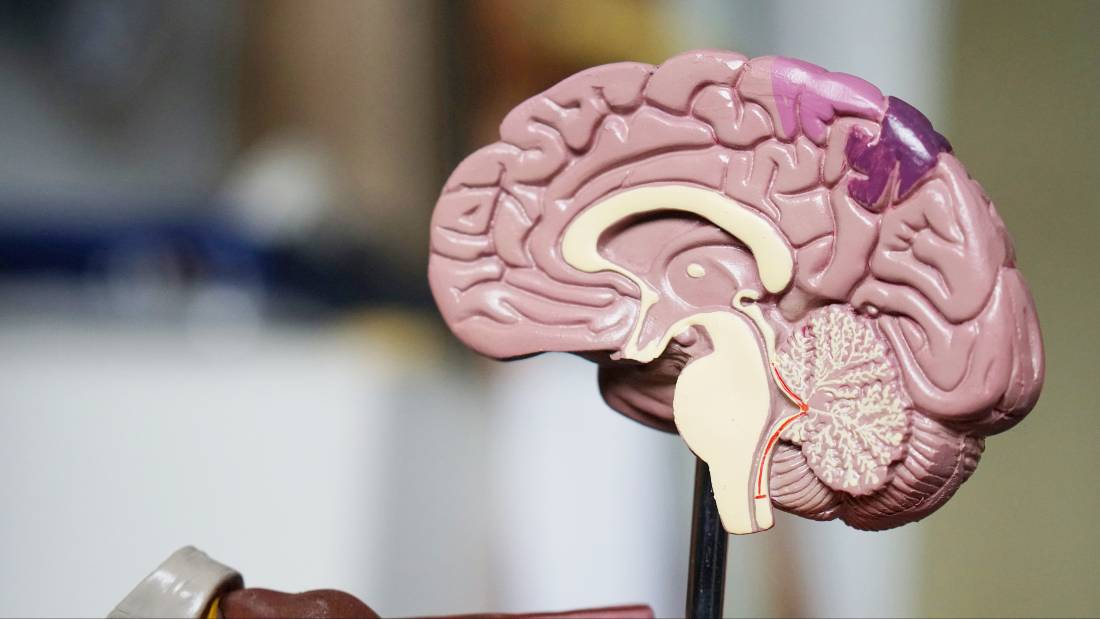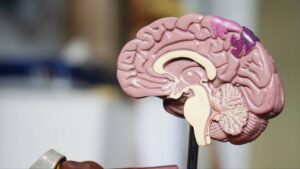Chin Priscilla
Brainspotting is an alternative to talk therapy that could bypass the limitations of language and access the brain’s subcortical regions involved in emotional processing, memory formation, and instinctive reactions. Developed in the early 2000s by psychotherapist Dr. David Grand, brainspotting is based on the concept that our visual field is intrinsically linked to our subconscious processing. This innovative approach aims to identify, process, and release deep-seated emotional and physiological experiences stored in the brain.
By focusing on specific eye positions, or “brainspots” – points in the visual field that correspond to traumatic experiences – therapists can help clients tap into unresolved trauma and emotions stored in the subcortical brain. Unlike traditional talk therapy, brainspotting utilizes the body’s innate capacity for self-scan and self-regulation to facilitate profound shifts in thinking, feeling, and behavior. As an alternative to more intensive treatments like EMDR, it offers a gentle, client-directed approach to healing.
What is Brainspotting?
At its core, Brainspotting (BSP) is based on the principle that “where you look affects how you feel.” It utilizes specific eye positions to access and process traumatic memories and emotions, aiming to treat various psychological issues, with a primary focus on trauma.
It’s a revolutionary approach that delves into the non-verbal processes of the brain. This unique therapy acknowledges that certain feelings and trauma may be beyond our conscious reach and cannot be easily articulated through words. Instead, it helps individuals access and process these deep-seated issues that may be blocked in the mind and body.
Brainspotting was pioneered by a psychotherapist, Dr. David Grand, in 2003. While practicing eye movement desensitization and reprocessing (EMDR) therapy, Dr. Grand observed that his clients’ emotional responses varied depending on their gaze. This led him to the realization that each client had various brainspots that could be used to access traumatic memories and emotions more effectively.
But how does where you look affect how you feel?
The Theoretical Background
Brainspotting is based on the theory that our bodies physically store emotional and traumatic experiences. When we go through difficult or overwhelming events, those feelings and memories can become “stuck” in our bodies, leading to a variety of mental and physical health challenges.
The core of the brainspotting approach is the idea that there is a strong connection between our brain, our eyes, and the way we process emotions and trauma. Researchers have found that a specific region of the brain is responsible for emotional processing, and this region is closely linked to our eye movements and the points we focus on with our gaze.
These particular “brainspots” – specific eye positions – are theorized to act as an access point to the deeper, subcortical regions of the brain where trauma and strong emotions can become trapped. By honing in on these brainspots, therapists using the brainspotting technique are able to help clients locate and process the trauma stored within.
The theory behind brainspotting also suggests that our bodies have a natural capacity to heal themselves when given the right conditions and support. By guiding clients to focus on the identified brainspots and use mindfulness techniques, therapists can facilitate the brain’s own restorative abilities. This allows the mind to finally let go of the trapped trauma and fully integrate those experiences into everyday life.
Ultimately, the brainspotting approach is rooted in the understanding that our emotional processing is profoundly linked to our physical experience and eye movements. By working directly with these connections, brainspotting provides a powerful tool for helping clients overcome deep-seated trauma and unlock their natural capacity for healing.

Brainspotting vs. EMDR: What's the Difference?
While both therapies use eye movements to access trauma and challenging emotions, there are some critical differences between brainspotting and EMDR:
- In EMDR, a therapist uses side-to-side eye movements to engage both sides of the brain. In contrast, brainspotting involves keeping the eye fixed to focus on one brain area.
- Brainspotting involves a less structured, intuitive approach, allowing clients to explore their emotions and bodily sensations. On the other hand, EMDR follows a structured eight-phase protocol.
Brainspotting vs. EMDR: How are they similar?
Rooted in Trauma Treatment
Both EMDR and brainspotting were developed with a primary focus on treating trauma and related psychological issues. They offer hope to individuals struggling with PTSD, anxiety, depression, and other trauma-related conditions.
The Power of Bilateral Stimulation
At their core, both techniques utilize bilateral stimulation. While the methods differ, this shared aspect is believed to be crucial in processing traumatic memories and emotions.
Neurobiological Foundations
EMDR and brainspotting are grounded in neurobiology. Both approaches aim to access and process information stored in the subcortical brain, tapping into the body’s innate healing mechanisms.
Embracing the Body-Mind Connection
These therapies recognize the intricate link between physical sensations and psychological experiences. By addressing both, they offer a holistic approach to healing.
Beyond Words: Non-verbal Processing
One of the most powerful aspects of both EMDR and brainspotting is their ability to process traumatic memories without requiring extensive verbal description. This can be particularly beneficial for clients who struggle to articulate their experiences.
The Adaptive Information Processing Model
Both techniques are based on the Adaptive Information Processing model, which suggests that trauma disrupts the brain’s natural healing process. EMDR and brainspotting aim to restore this process.
Client-Centered Healing
In both approaches, the client’s internal experience takes center stage. Therapists act as guides, but the healing process is driven by the client’s own mind and body.
What Happens in Brainspotting Session?
Here’s a walkthrough of what typically happens during a session.
1. Initial Setup and Discussion
- The session begins with a conversation between you and the therapist about your current concerns, feelings, or specific issues you want to address.
- Your therapist will explain the brainspotting process and answer any questions you might have.
2. Body Awareness and Baseline
- You’ll be guided to become more aware of how your body responds to thoughts, particularly those related to the issue you’re addressing.
- The therapist will ask you to identify areas in your body that feel stressed, painful, or uncomfortable when focusing on the issue.
- You’ll be asked to describe these physical sensations and emotions, rating their intensity on a scale from 1 to 10 (10 being most upsetting, 1 being neutral).
- This rating serves as a baseline to measure improvement in symptoms throughout and after the session.
3. Identifying the Brainspot
There are multiple methods for identifying a brainspot. Your therapist may use one or more of these techniques:
The therapist will use a pointer (often a pen or small stick) and move it slowly across your visual field. As you follow the pointer with your eyes, you’ll be asked to notice any increased activation or discomfort in your body or emotions.
In gazespotting, the therapist observes your eyes as you discuss the issue or recall a traumatic memory. To find the brainspot, the therapist looks for natural eye positions where your eyes tend to fixate or where there’s a noticeable change in your facial expression or body language.
- The therapist will also observe for reflexive actions that might occur, such as:
- Yawning
- Coughing
- Muscle twitching
- Facial tics
- Pupil dilation or constriction
- Eyelid twitching
- These reactions, which you might not be aware of, are important signals.
- When you identify a spot that triggers a stronger reaction, that’s considered a “Brainspot.” This spot is believed to correspond to the neural networks holding the traumatic or distressing memory.
4. Processing the Brainspot
- Once a Brainspot is identified, you’ll be asked to maintain your gaze on that specific point.
- You’ll be encouraged to allow and observe your emotions, thoughts, associations, and somatic reactions without judgment or trying to control them.
- You may experience a range of sensations, emotions, or memories, including:
- Physical sensations (e.g., tingling, warmth, tension)
- Emotional responses (e.g., sadness, anger, relief)
- Memories or flashes of images
- Insights or new perspectives on the issue
It’s normal to experience some distress or uncomfortable physical sensations during this process. Remember, your body-mind system is bringing up what needs to be processed for healing.
5. Therapist Support and Guidance
Throughout the process, the therapist maintains a supportive presence, guiding you through the experience. They will provide support and grounding if the process becomes overwhelming. Depending on their style, they may integrate other therapy modalities during this process to maximize the healing experience as well.
6. Natural Conclusion and Re-evaluation
At the end of the session, you’ll share any thoughts or feelings you became aware of during the process. This is also an opportunity to further integrate and consolidate insights.
What to expect after Brainspotting session
Everyone’s experiences can vary. Some people may feel more or less emotional or physically tired after a session. However, the overall goal of brainspotting is to help clients process and release unresolved trauma, which can lead to a sense of calm and emotional well-being.
You may experience:
- Emotional vulnerability: It’s normal to feel emotionally vulnerable after a brainspotting session, as the therapy can bring up buried emotions.
- Physical fatigue: Some people may experience physical fatigue or tiredness after a session, as the brain and body is working hard to process information.
- Continued processing: The effects of brainspotting can continue to unfold in the days and weeks following a session, as the mind and body integrate the experience.
- Sense of calm and release: Over time, as clients continue to process and release unresolved trauma, they may experience a sense of calm and lasting release from emotional issues.
- Changes in sleep patterns: Clients may find that their sleeping patterns shift after sessions.
- Shifting dream content: As therapy progresses, the content of dreams may shift, reflecting the ongoing healing process. For example, recurring nightmares may decrease, while more positive or neutral dreams may emerge.
How long does brainspotting therapy last?
The duration of brainspotting therapy can vary significantly. It can range from multiple sessions to several months, depending on the client’s individual needs and the complexity of the issues being addressed. Brainspotting offers a unique approach to therapy that can be particularly helpful for individuals who struggle with verbalizing their experiences or who have difficulty accessing their emotions through traditional talk therapy.
Who Can Benefit from Brainspotting Therapy?
Brainspotting is a flexible and successful therapy strategy for various mental health conditions. It is beneficial for those suffering from self-esteem issues, social anxiety, anxiety, depression, as well as various traumas, offering an alternative to traditional talk therapies. While conventional treatments can be effective in addressing emotional discomfort and its underlying causes, they are not suitable for everyone. You could find standard talk therapy uncomfortable or challenging. So, you might find brainspotting, which does not rely primarily on verbal communication, particularly attractive.
If you are dealing with trauma, anxiety, depression, or PTSD, brainspotting helps release deep-seated tension and pain by targeting specific “brainspots” associated with these issues, allowing you to rewire your brain’s response to triggers, reducing the emotional hold that traumatic memories might have on you.
What are the Advantages of Brainspotting Therapy?
Holistic Approach
One of the main advantages of brainspotting is its holistic approach. Brainspotting addresses the mind-body connection, allowing you to process emotions by focusing on mental and physical sensations.
Non-Verbal and Somatic Processing
- Body-based approach: Brainspotting focuses on the connection between the body and mind. It often brings attention to physical sensations and body awareness, which can help clients process emotions that are stored in the body.
- No need to verbalize the trauma: Clients are not required to describe or relive their trauma in detail, which can make it especially helpful for those who have difficulty talking about painful experiences or are overwhelmed by verbal processing.
Flexibility
This therapy can be tailored to fit anyone’s specific background and situation, addressing a wide range of psychological and emotional issues, from trauma and anxiety to performance improvement. It encourages you to tune into your bodily sensations and emotions, fostering greater self-awareness so that you can participate actively in your healing process.
Access to Brain’s Deeper Regions
Brainspotting targets the deeper regions of the brain where traumatic memories and emotions are stored. Accessing these areas can help you process and integrate memories that might not be reachable through conventional therapies.
Adaptability
One of the primary benefits of brainspotting treatment is its flexibility in addressing a wide range of psychological and emotional difficulties, including:
- Anxiety disorders
- Depression
- Complex trauma and PTSD
- Grief
- Anger issues and other emotion regulation problems
- Substance use and addiction
- Performance anxiety
It can be used as a standalone treatment or with other therapies. Beyond mental health, brainspotting can be a valuable tool for athletes, artists, and other professionals aiming to enhance their performance. By helping individuals tap into their creativity and focus, brainspotting can improve concentration and reduce performance anxiety.
Can Brainspotting Be Done Virtually?

The brainspotting process has been adapted to work well online, allowing you to participate from your home or anywhere that feels comfortable. Just like in-person sessions, virtual brainspotting involves identifying a specific issue and guiding you to a brainspot where emotions and memories are stored. You’ll need a stable internet connection and a device with a camera and microphone. Your therapist will guide you through the process, just as they would in person, using the screen to help you find your brainspot.
Visual aids like pointers can still be incorporated, and the therapist will guide you to track with your eyes on the screen. Gazespotting can be used without a pointer. You can also use headphones for bilateral sound or music, which can be played on your end to enhance the experience.
Like an in-office brainspotting session, the key to a successful online brainspotting session is communication and establishing a safe environment to express your feelings. While the format differs, the basic concepts and methods of brainspotting remain the same. Virtual sessions are an excellent option for those who prefer remote therapy or have difficulty attending in-person appointments.
Conclusion
Brainspotting is a powerful therapeutic approach that helps individuals process deeply stored emotions and memories, making it practical for treating trauma, anxiety, PTSD, dissociative disorder, and other mental health concerns. By targeting specific “brainspots,” brainspotting therapy facilitates healing through a holistic mind-body connection.
With its ability to unlock creativity and reduce performance anxiety, brainspotting empowers clients to release tension, gain insights, and develop new perspectives.
ABOUT THE AUTHOR
Chin Priscilla
Priscilla is a therapist, psychoanalyst, and the practice owner of Imagine Emotional Wellness, a culturally responsive online therapy practice in New York, New Jersey, and Washington DC.
Prioritize your mental health and self-care from the comfort of your home.









